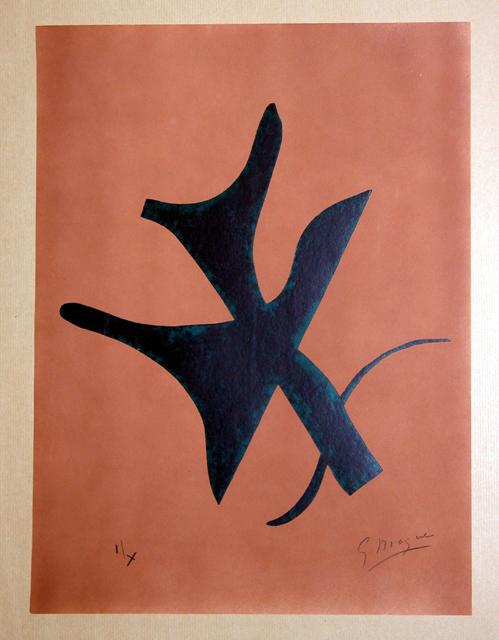As a young man, Braque was apprenticed to a decorative house painter where he learned the art of faux finishing. In 1902, Braque decided to study painting as fine art. First impressed by the style of the Fauves, Braque soon became transfixed by the distorted forms and unconventional perspective in Cézanne’s work. In 1907, a fateful introduction to Picasso led him to their mutual development of Cubism.
“Like two mountaineers,” said Braque, he and Picasso dared to question traditional artistic conventions. In their canvases and collages of 1908-1914, this inseparable team reduced still life elements, architectural forms, musical instruments and the human figure to geometric shapes resembling cubes. These prism-like compositions allowed the viewer to see both flat and three-dimensional planes at once – a radical departure from all painting that had been done before.
A born craftsman, Braque was drawn to the print studio throughout his career. His early etchings were in the Cubist tradition. In the 1940’s he collaborated with the famous master printer Fernand Mourlot to create brilliant, bold color lithographs. With Mourlot, he chose to simplify his imagery and focus on a few specific themes – close-up views of familiar objects such as a single pitcher, a profile, a bird or sometimes a small grouping of flowers, fruits or shells.
These works reflect Braque’s lifelong interest in the great tradition of still life. Like the cubist canvases that preceded them, these compact and luminous compositions on paper exemplify Braque’s unique ability to give everyday objects a quality of “universality” through his interpretation of them. He once wrote, “the limitation of the means gives style and engenders creation”. By limiting himself to few colors and his favorite, humble subjects, Braque created pure and calming graphic works that quietly engage our imaginations and sensibilities.

